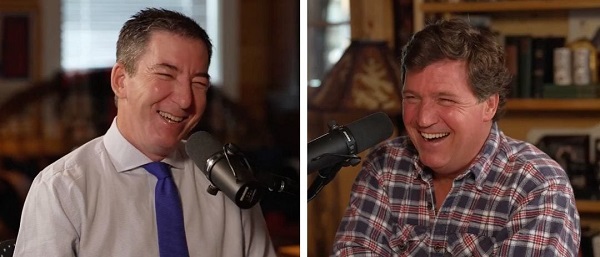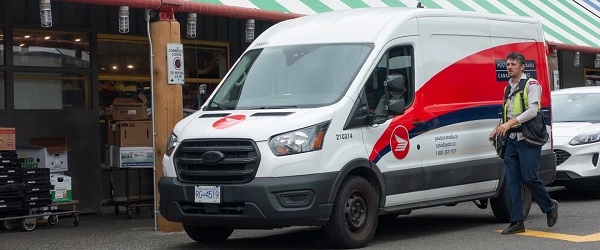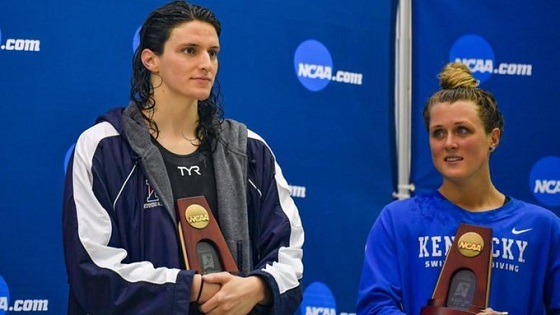News
Sylvan Lake will develop huge sports and recreation park

From the Town of Sylvan Lake
Conceptual Design for a Future Sports and Recreation Park Approved

Town Council has approved a Conceptual Design for a future recreation and sports field – Pogadl Park. The Concept Design provides a general overview of how the site could be designed, and was developed after extensive public engagement activities and events with local user groups and the community as a whole.
The Town of Sylvan Lake will take a phased approach to construction, and is committed to community collaboration and fiscal responsibility.
“One thing that is important to keep in mind is – this is a long-term plan with incremental, phased development. Once adopted, actual construction will take years, and will rely on community support, partnerships, and possible grant opportunities. The Design Concept for Pogadl Park may change over time, as the Town identifies opportunities and challenges, partnerships, as well as collects public feedback.” – Mayor Sean McIntyre
The next step is to provide Town Council project plan for “Phase One” of construction, which is funded through the 2019 Capital Budget. The Town of Sylvan Lake is also seeking grant funding and sponsorship opportunities to help offset the costs.
Identification of a location for new baseball diamonds, was a Council Strategic Priority 2013 – 2017, and the 2018 – 2021 Council Strategic Plan identifies “the complete design, and construction of Pogadl Park, Phase 1, including campgrounds, ball diamonds, soccer fields, washrooms, and parking lot,” as a priority. The current baseball diamonds, located at Four Seasons Park, were constructed in the mid 1980s; the park is unable to expand due to location restrictions, and given the proximity to an arterial road is a safety concern.
For more information, the public is invited to visit our Pogadl Park project page at www.sylvanlake.ca/sportspark
Pogadl Park Backgrounder

- In 2016, members of the Pogadl family generously donated 20 acres of land to the Town of Sylvan Lake. In conjunction with the donation, the Town purchased an additional 54 acres of land and received 6 acres as a Municipal Reserve contribution, for the development of a future, 80 acre, sport and recreation park to replace the aging sporting amenities within the existing Four Seasons Park.
- A 2016 land appraisal identifies the market value for the lands at $20,000 per acre, which is the price the Town paid for the 54 acres.
- Based on population thresholds identified in the Town of Sylvan Lake’s Recreation, Parks, and Open Spaces Master Plan, the following outdoor amenities are at a population deficit, as of 2018:
o Baseball diamonds; o Soccerpitches;
o TennisCourts; o Playgrounds.*Note: newer or emerging sports, such as Pickleball, were not included in the 2010 Master Plan, but have been identified as a required amenity as per the 2018 user group and public engagement sessions for Pogadl Park.
- Based on population thresholds identified in the Town of Sylvan Lake’s Recreation, Parks, and Open Spaces Master Plan, the following outdoor amenities are at a population deficit, as of 2018:
• Following a discussion with the executive of the Sylvan Lake Spray Park Committee, and based on the merits of featuring a spray park at a location considered a “hub” for outdoor activities, the approved Conceptual Design also recommends a relocation to Pogadl Park.
International
CBS settles with Trump over doctored 60 Minutes Harris interview

CBS will pay Donald Trump more than $30 million to settle a lawsuit over a 2024 60 Minutes interview with Kamala Harris. The deal also includes a new rule requiring unedited transcripts of future candidate interviews.
Key Details:
- Trump will receive $16 million immediately to cover legal costs, with remaining funds earmarked for pro-conservative messaging and future causes, including his presidential library.
- CBS agreed to release full, unedited transcripts of all future presidential candidate interviews—a policy insiders are calling the “Trump Rule.”
- Trump’s lawsuit accused CBS of deceptively editing a 60 Minutes interview with Harris in 2024 to protect her ahead of the election; the FCC later obtained the full transcript after a complaint was filed.
Tonight, on a 60 Minutes election special, Vice President Kamala Harris shares her plan to strengthen the economy by investing in small businesses and the middle class. Bill Whitaker asks how she’ll fund it and get it through Congress. https://t.co/3Kyw3hgBzr pic.twitter.com/HdAmz0Zpxa
— 60 Minutes (@60Minutes) October 7, 2024
Diving Deeper:
CBS and Paramount Global have agreed to pay President Donald Trump more than $30 million to settle a lawsuit over a 2024 60 Minutes interview with then–Vice President Kamala Harris, Fox News Digital reported Tuesday. Trump accused the network of election interference, saying CBS selectively edited Harris to shield her from backlash in the final stretch of the campaign.
The settlement includes a $16 million upfront payment to cover legal expenses and other discretionary uses, including funding for Trump’s future presidential library. Additional funds—expected to push the total package well above $30 million—will support conservative-aligned messaging such as advertisements and public service announcements.
As part of the deal, CBS also agreed to a new editorial policy mandating the public release of full, unedited transcripts of any future interviews with presidential candidates. The internal nickname for the new rule is reportedly the “Trump Rule.”
Trump initially sought $20 billion in damages, citing a Face the Nation preview that aired Harris’s rambling response to a question about Israeli Prime Minister Benjamin Netanyahu. That portion of the interview was widely mocked. A more polished answer was aired separately during a primetime 60 Minutes special, prompting allegations that CBS intentionally split Harris’s answer to minimize political fallout.
The FCC later ordered CBS to release the full transcript and raw footage after a complaint was filed. The materials confirmed that both versions came from the same response—cut in half across different broadcasts.
CBS denied wrongdoing but the fallout rocked the network. 60 Minutes executive producer Bill Owens resigned in April after losing control over editorial decisions. CBS News President Wendy McMahon also stepped down in May, saying the company’s direction no longer aligned with her own.
Several CBS veterans strongly opposed any settlement. “The unanimous view at 60 Minutes is that there should be no settlement, and no money paid, because the lawsuit is complete bulls***,” one producer told Fox News Digital. Correspondent Scott Pelley had warned that settling would be “very damaging” to the network’s reputation.
The final agreement includes no admission of guilt and no direct personal payment to Trump—but it locks in a substantial cash payout and forces a new standard for transparency in how networks handle presidential interviews.
Daily Caller
Watch As Tucker Carlson And Glenn Greenwald Get A Good Laugh Over CNN Pretending Biden’s Decline Is Breaking News


From the Daily Caller News Foundation
By Hailey Gomez
During a podcast Friday, Daily Caller News Foundation co-founder Tucker Carlson and independent journalist Glenn Greenwald couldn’t stop laughing over CNN’s sudden realization of former President Joe Biden’s mental decline.
CNN’s Jake Tapper along with Axios’ Alex Thompson released their book, “Original Sin,” on May 20, which details Biden’s cognitive slide over the last four years — a concern Republicans had raised even before the 2020 election. While appearing on “The Tucker Carlson Show,” Carlson joked that Greenwald had been “scooped” by CNN on Biden’s mental fitness.
“So you are, I think, the dean of alternative media. You’ve been doing this longer than anybody that I know personally. So it must be a little weird to get scooped by CNN on Joe Biden’s dementia, like you had no idea,” Carlson said. “None of us knew.”
“None of us knew,” Greenwald teased. ” There was that debate, and we were all shocked, but we were told he had a cold. So I was like, ‘OK, he’s on some cold medication. Who hasn’t been there before? It makes you a little dragged, a little groggy, a little just like dragged.’ But no, now Jake Tapper has uncovered the truth. It turns out Joe Biden was in cognitive decline.”
Sources told Tapper and Thompson that Biden’s mental fitness had declined rapidly during his time as president, with his mental state becoming so severe at one point that aides discussed putting him in a wheelchair.
WATCH:
Tapper has faced pushback from both Democrats and Republicans over the timing of his book and the revelations it includes. The CNN host has long defended the former president.
Carlson went on to joke with Greenwald about how he believed Tapper gathered the material for the book.
“Just a hardcore shoe leather investigative reporting,” Greenwald joked. “He’s working his sources, calling all the people in Washington, digging up FOIA documents.”
“It’s one of those things where you kind of can’t believe what you’re witnessing because Jake Tapper is pretending to have uncovered a scandal that he himself led the way in the media, or one of the leaders in the media, in covering up,” Greenwald added. “To the point where if somebody would go on his show and say ‘Joe Biden is obviously in cognitive decline.’ He would say ‘How dare you bully kids who stutter?’”
Greenwald went on to reference how Tapper had accused President Donald Trump’s daughter-in-law, Lara Trump, of “mocking” the former president over his stutter during a 2020 interview.
Despite Lara Trump pointing to what she believed were signs of Biden’s problems, Tapper dismissed her remarks at the time, saying she had “no standing to diagnose somebody’s cognitive decline.”
In addition to Lara Trump, Tapper also dismissed former Democratic presidential candidate Dean Phillips during a 2024 interview after Phillips expressed his “concerns” about Biden running for a second term.
“Obviously, he wanted Biden to win desperately and would not tolerate anyone going on the show and saying that Biden was in cognitive decline,” Greenwald said. “Now he’s making millions of dollars off a book.”
Following the media coverage of Tapper’s and Thompson’s book, Biden appeared to tell reporters on Friday he could “beat the hell out of” the two journalists.
-

 Business1 day ago
Business1 day agoLatest shakedown attempt by Canada Post underscores need for privatization
-

 Business1 day ago
Business1 day agoWhy it’s time to repeal the oil tanker ban on B.C.’s north coast
-

 Aristotle Foundation2 days ago
Aristotle Foundation2 days agoHow Vimy Ridge Shaped Canada
-

 Alberta1 day ago
Alberta1 day agoPierre Poilievre – Per Capita, Hardisty, Alberta Is the Most Important Little Town In Canada
-

 International2 days ago
International2 days agoCBS settles with Trump over doctored 60 Minutes Harris interview
-

 Energy1 day ago
Energy1 day agoIf Canada Wants to be the World’s Energy Partner, We Need to Act Like It
-

 MxM News1 day ago
MxM News1 day agoUPenn strips Lia Thomas of women’s swimming titles after Title IX investigation
-

 Alberta1 day ago
Alberta1 day agoAlberta Provincial Police – New chief of Independent Agency Police Service






